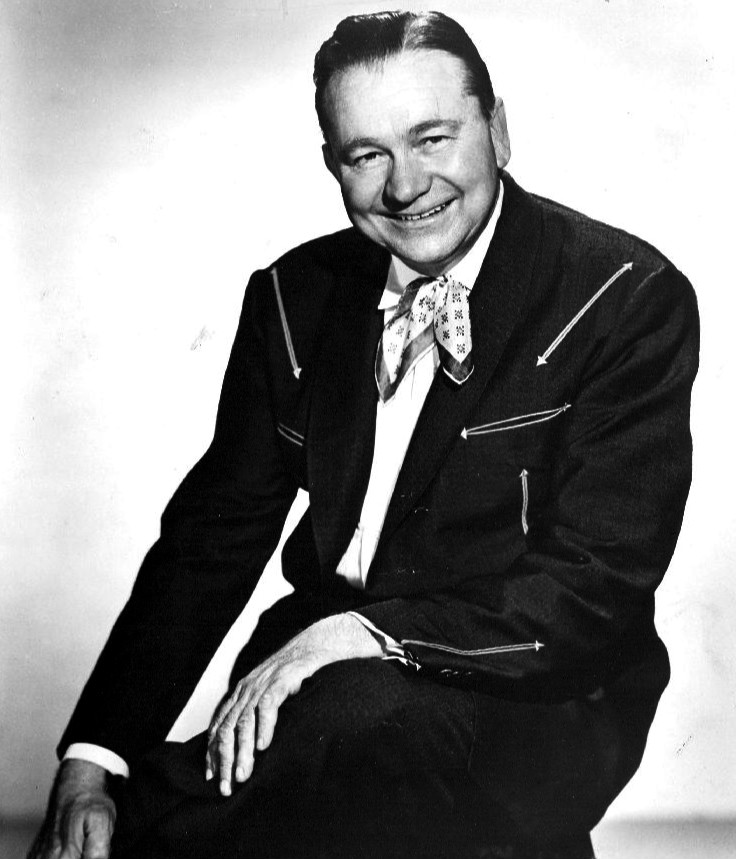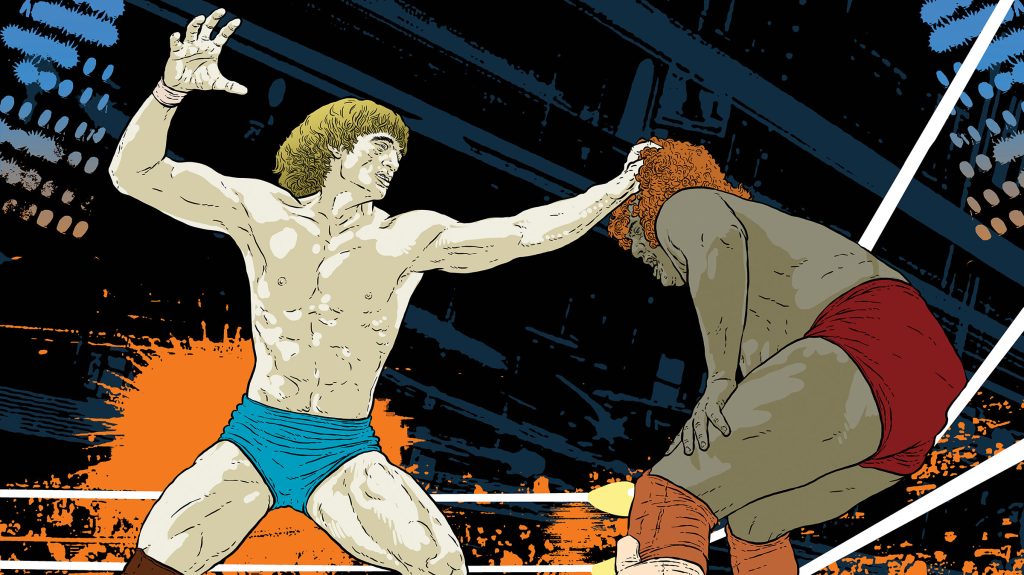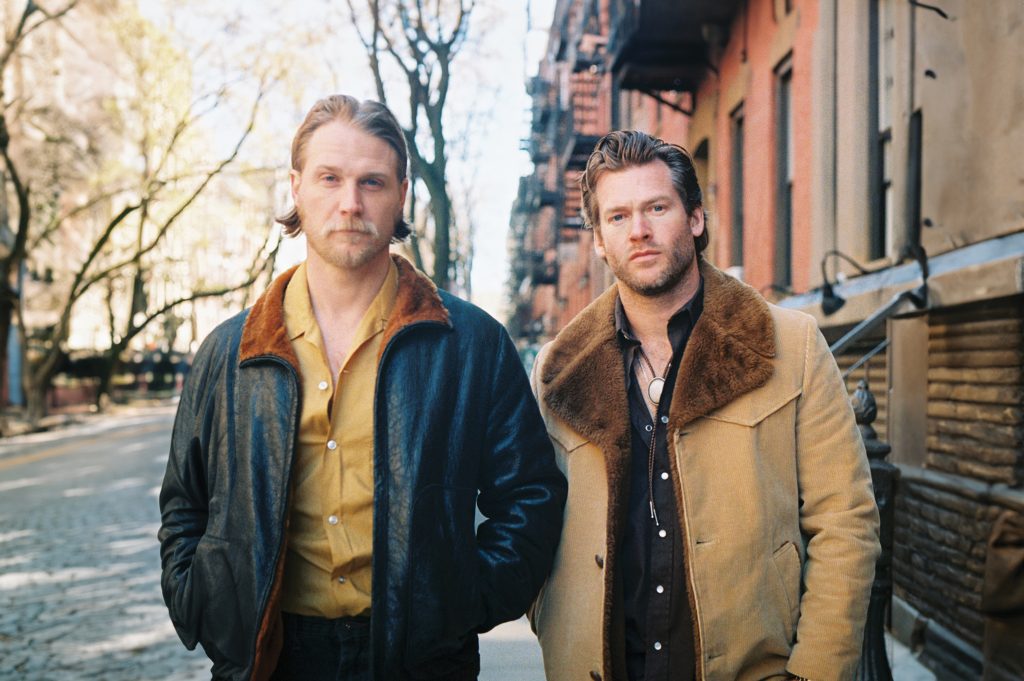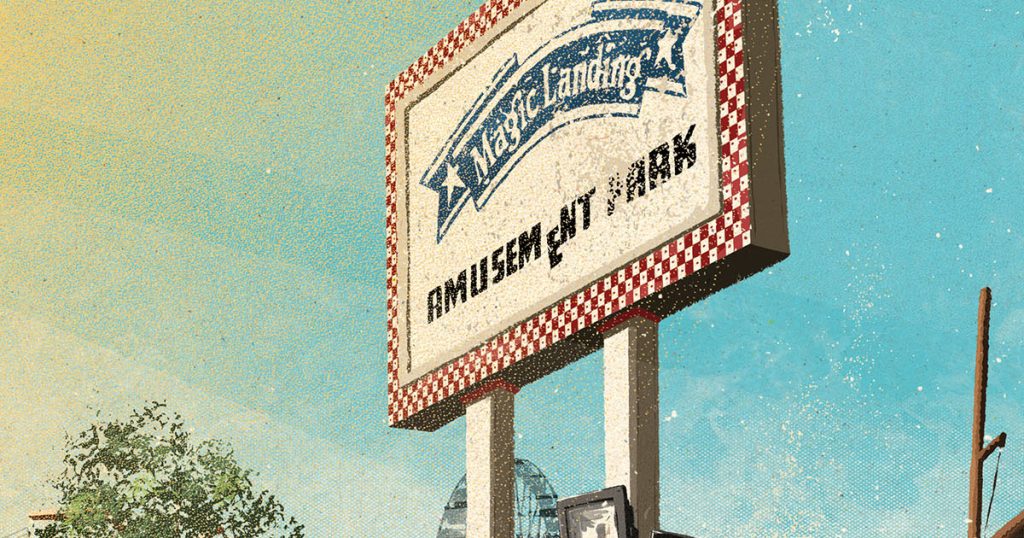
By Capitol Records – eBay itemphoto frontphoto back, Public Domain, https://commons.wikimedia.org/w/index.php?curid=22711401
Of all the actors, musicians, sports figures, and entertainers known as Tex, the most famous is practically unknown to younger generations today. That would be Woodward Maurice “Tex” Ritter, one of Hollywood’s singing cowboys of the mid-20th century.
He wasn’t really cut out for the role. His chubby cheeks and squat physique were not matinee-idol material. Nor was he much of a vocalist. “Tex couldn’t sing worth a spit, but he used his dramatic training and warmth to sell a song in a way not unlike Ernest Tubb,” says music historian Rich Kienzle.
Ritter also possessed a secret weapon—deep knowledge of real cowboy songs, gleaned from three of his professors at the University of Texas at Austin: J. Frank Dobie, John A. Lomax, and Oscar J. Fox, all of whom were world-renowned scholars of cowboy songs and folk traditions.
So while he might not have been the brightest singing cowboy star in Western movie history—fellow native Texan Gene Autry and Ohioan Roy Rogers compete for that title—it’s safe to say no one excelled in the multiple realms of recording, radio, television, and theatrical productions like Ritter did.
Visitors can learn all about Ritter at the Tex Ritter Museum in the Texas Country Music Hall of Fame, located on West Panola Street in the East Texas town of Carthage. Tex’s boots, shirts, guitars, saddles, loads of movie posters and placards, and a timeline are displayed in an exhibit space that looks like a movie theater. “The cowboy movie people come to see Tex,” says Tommie Ritter Smith, Ritter’s cousin and founder of the museum. “The country music fans come to see Jim Reeves and the 55 other country music stars represented in the museum.”
Born on Jan. 12, 1905, Ritter grew up on a farm in Panola County before moving south to Nederland and graduating from high school in Beaumont. When he stepped in front of a microphone for the first time, at radio station KPRC in Houston in 1928, he sang cowboy songs he’d learned at UT.
That same year, Ritter moved to New York City and joined the men’s chorus of the Broadway production of The New Moon. Three years later, he had a starring role as the cowboy Cord Elam in the play Green Grow the Lilacs, which would be adapted into the musical Oklahoma! It was cast members of that Broadway show who bestowed the moniker Tex on him.
The Tex Ritter Museum
Address: 310 W. Panola St., inside the the Texas Country Music Hall of Fame
Hours: Mon-Sat
10 a.m.-4 p.m.
Admission: $10 for adults, $5 for children
Website: tcmhof.com
Ritter embraced being typecast as a cowboy for the rest of his career. He played cowboys in Great White Way productions of The Round Up and Mother Lode while becoming a singing cowboy on the radio via broadcasts like The Lone Star Rangers, the daily Cowboy Tom’s Roundup, and Barn Dance. His bottom-of-the-well baritone caught the ears of music talent scout Art Satherley, who produced Ritter’s first records “A-Ridin’ Old Paint” and “Rye Whiskey” in 1933.
Ritter’s bona fides on the stage and over the airwaves prompted a move to Southern California in 1936. He starred in more than 60 Western movies, beginning with Song of the Gringo. He usually played a character named Tex, as you can see scrolling through his roles on IMDB.com, and frequently appeared alongside fellow movie cowboy Johnny Mack Brown.
The Westerns Ritter appeared in were low-budget affairs that lacked the production values of Republic Pictures, the home of Gene Autry, Roy Rogers, and John Wayne, but he managed to stand out nonetheless. He continued making movies after the Westerns petered out, playing himself in the 1965 film Nashville Rebel, which starred a young Waylon Jennings.
Where Ritter really boosted his singing cowboy credentials was through records. In 1942, he recorded “(I Got Spurs That) Jingle Jangle Jingle” and “Goodbye My Little Darling” for Capitol Records a month after that label’s founding. In 1944, he scored a No. 1 country hit, “I’m Wastin’ My Tears On You.” Others followed, including “Deck of Cards,” “Boll Weevil,” “Streets of Laredo,” and “Blood in the Saddle.” Eight years later, his song “Ballad of High Noon (Do Not Forsake Me)” opened the film High Noon and earned Ritter an Oscar for Best Original Song. His last hit was his spoken word tribute to deceased country music stars, “(I Dreamed Of A) Hillbilly Heaven.”
As for television, Ritter was an early adapter of the new medium. In 1953, he joined the cast of Town Hall Party, a pioneering live TV broadcast showcasing country musicians from Southern California in the tradition of radio’s Grand Ole Opry. Later, he also hosted Ranch Party, a nationally syndicated spinoff of Town Hall Party, and NBC-TV’s Five Star Jubilee.
Done with movies and TV, Ritter moved from Southern California to Nashville, where he went to work at WSM radio and joined the cast of the Grand Ole Opry. He was the fifth person inducted into the Country Music Hall of Fame and presided over the Country Music Association. Hollywood, however, rubbed off on his family, with younger son John Ritter becoming even more famous than his father as an actor and comedian, largely through his role as Jack Tripper in the hit television series Three’s Company. Ritter’s grandsons Jason, Tyler, and Noah Lee are also actors. Granddaughter Carly Ritter, on the other hand, took to music, becoming a Scottish folk and country singer.
Ritter died 50 years ago on Jan. 2, 1974, but his legacy continues to be celebrated at the museum near his birthplace, largely through the efforts of Smith and Ritter’s late son John. Smith remembers her famous cousin’s visits at their grandmother’s when she was a little girl, and later when he performed concerts in Houston. “He had a dry wit, he was very kind, and did not think of himself as a star,” she says. “I don’t think he took himself seriously.”
The singing cowboy of stage, screen, jukeboxes, and the airwaves was simply the best Tex there ever was.








